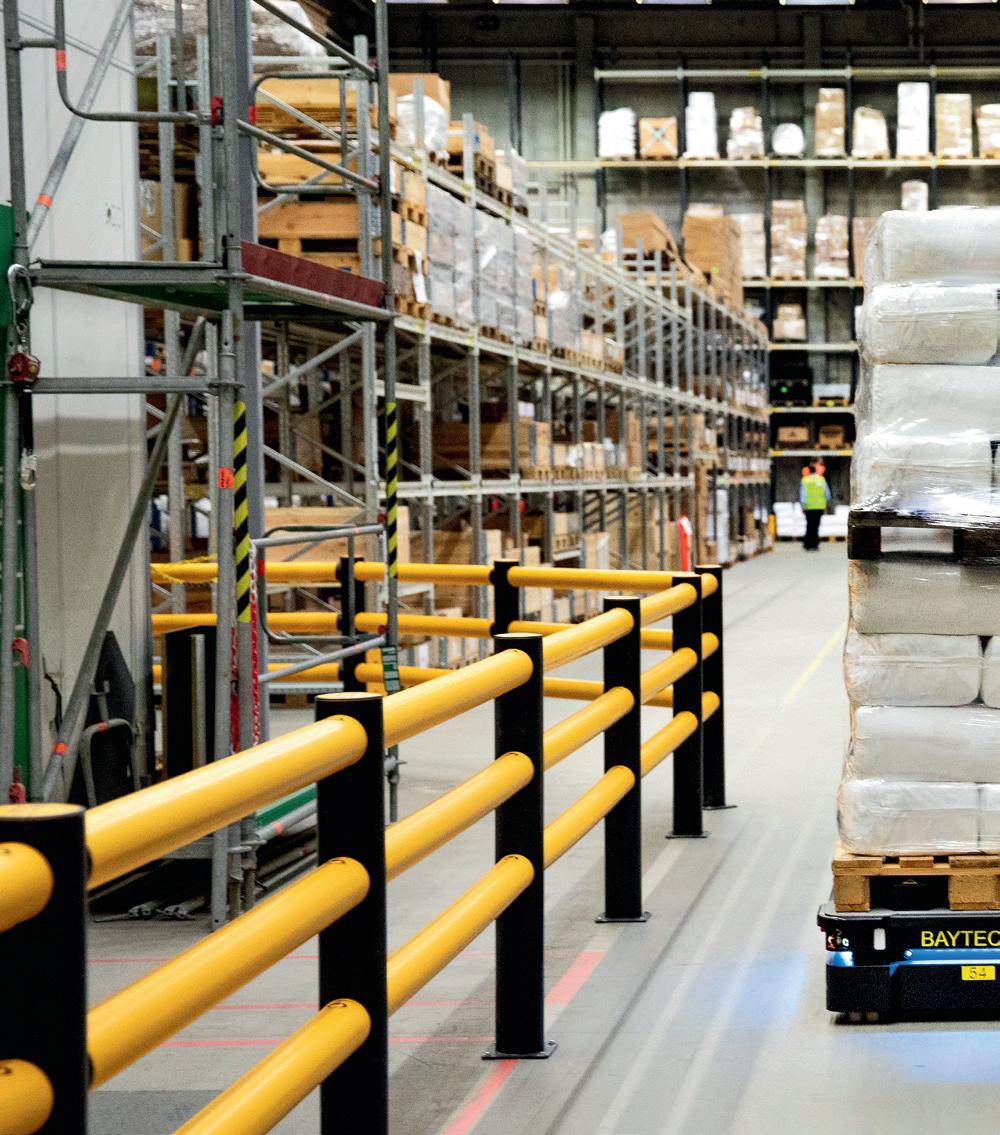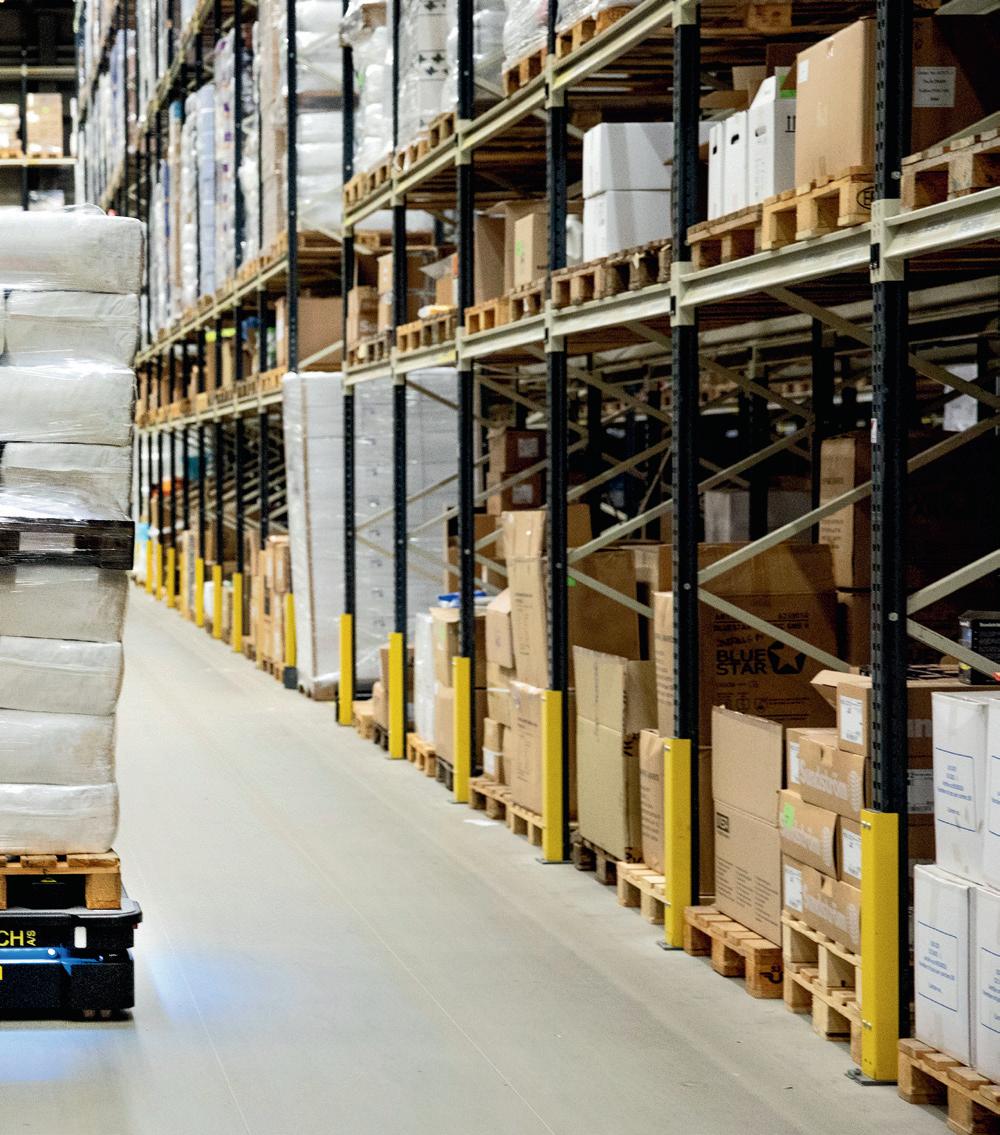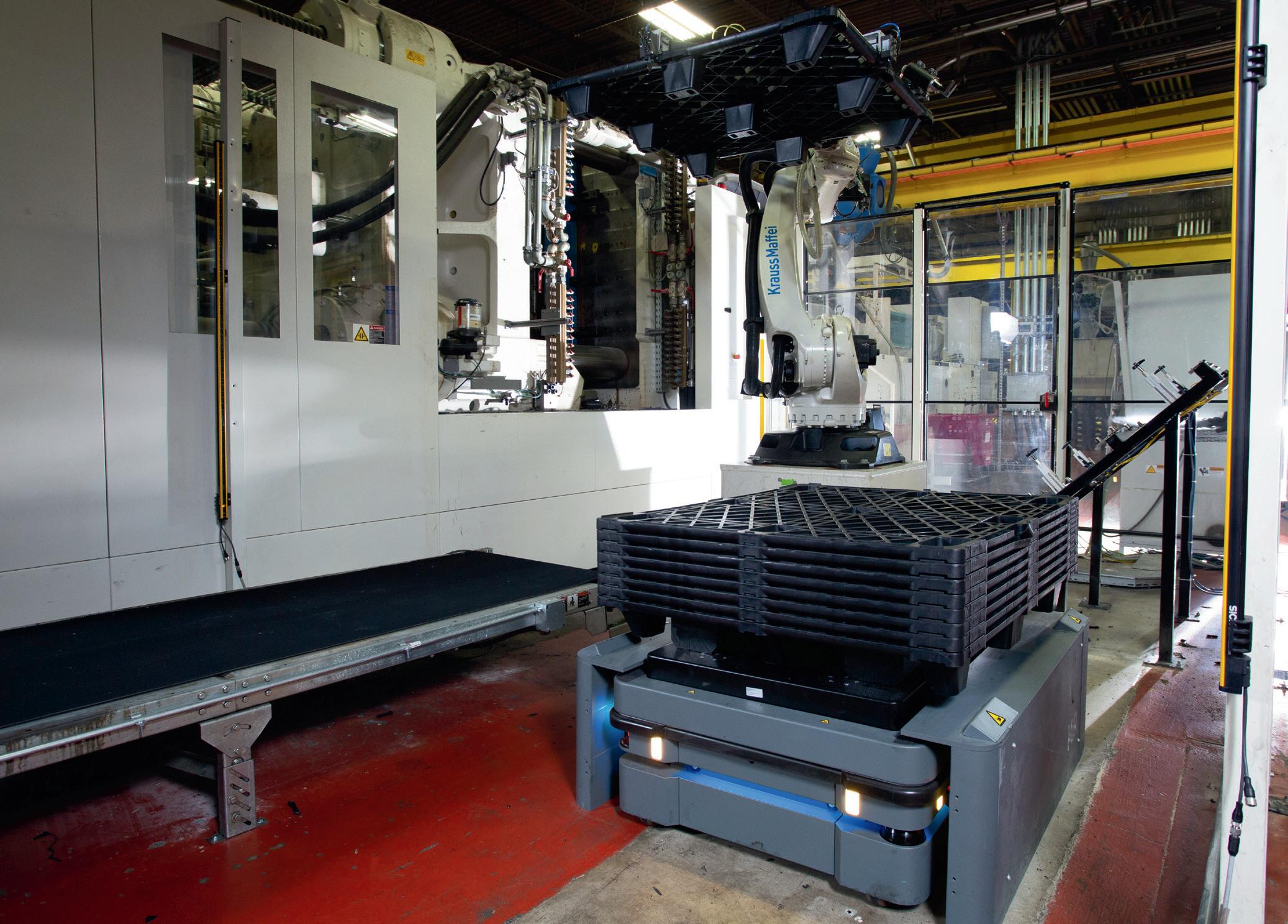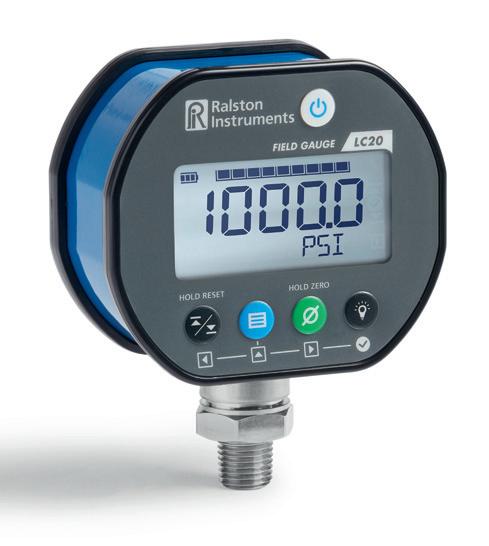
15 minute read
The Internet of Things and 5G
Elizabeth Gill, Robotics Specialist, and Martin Keetels, National Manager Emerging Technology, Konica Minolta
Leveraging the IoT and 5G in smart connected ways will make it possible to build a strong technology infrastructure to support autonomous robots.
The profound impact of industrial robots on intralogistics was underlined in 2020 when COVID-19 increased the pressure on supply chains and infrastructure. New consumer and commercial behaviours are likely to remain in place, with increasing demand for e-commerce and on-demand delivery, facilitated by the streamlined workflows that robots can execute.
Australian manufacturers can leverage the recent supply chain disruptions to revitalise the local manufacturing industry. It’s no longer true to say that offshore providers have a competitive advantage over local businesses; offshore vulnerabilities have been laid bare in recent months and local supply is more attractive than ever. To capitalise on this opportunity, Australian manufacturers and warehouse and logistics providers need to maximise efficiencies and manage safety concerns.
Robots have been used in manufacturing for six decades. From the first industrial robot, their mission has been to streamline processes and introduce efficiencies for manufacturing operations. By automating dangerous, repetitive or exhausting tasks, robots can free up personnel to add more value in a manufacturing environment. Working alongside robots has never been safer and, indeed, the robots themselves

are also now actively involved in making the workplace even safer for humans.
It’s essential to have a strong technology infrastructure underpinning autonomous robots to ensure they can deliver maximum value at scale. This is where the IoT and 5G come into their own.
The Internet of Things (IoT) is a network of objects that can collect and transfer data over a wireless network without human intervention. Often, these objects are sensors that can communicate crucial information about a machine or environment. For example, air sensors can alert air conditioning systems of air quality and temperature, triggering the air conditioning system to switch on or turn the temperature up or down.
5G is the latest iteration of wireless connectivity, providing ultra-high-speed data transmission and capable of connecting 10 times the number of devices compared with 4G1 . 5G will become the underlying fabric of a modern ecosystem fully connected by intelligent sensors and devices. When the data from sensors can be communicated almost instantly, the connected systems can respond faster. This could lead to more widespread adoption of technologies that currently seem futuristic, such as self-driving cars or driverless trains, for example.
As the IoT expands and 5G becomes available, the power of robots to improve manufacturing operations becomes even more pronounced, especially as current challenges like poor Wi-Fi connectivity become obsolete. Faster responses from robots to commands triggered by sensors or other connected devices can dramatically improve efficiency and output while reducing errors and waste.
WHEN DEPLOYING ROBOTS INTO AN IoT-RICH
ENVIRONMENT, THE PRODUCTIVITY OF BOTH THE ROBOT AND THE ENVIRONMENT CAN
INCREASE SIGNIFICANTLY.
Using IoT devices to boost productivity
When deploying robots into an IoT-rich environment, the productivity of both the robot and the environment can increase significantly. Letting the robot communicate directly with other pieces of equipment removes bottlenecks and streamlines workflows. For example, robots connected to production systems or point solutions can be automatically sent to retrieve a finished good from the production line or move products or raw materials to the next stage in their manufacturing cycle. At the same time, robots are continuously learning, so they can be aware of other moving objects within the facility and optimise movements, further increasing productivity.
For example, connecting an artificial intelligence (AI) camera to the network can greatly assist in traffic management. The camera can identify the periods of increased activity in certain spots, then direct robots to avoid that area, taking alternative routes to avoid congested areas and get to where they need to be faster. This AI works hand in glove with sophisticated avoidance systems which include onboard micro laser scanners, 3D data cameras and dynamic safety fields.
COVID-19 created a need for humans to be able to work together without coming into physical contact. Industrial robots integrated with information from IoT devices are ideal for this
scenario as they reduce the need for peer-to-peer contact, in turn reducing the risk to an organisation’s workforce. And, because these autonomous robots don’t need to follow physical or pre-set guidance tracks, they can be deployed quickly and can be flexible in decision-making when it comes to the routes they take throughout the facility, maximising productivity.
In recognition of these potential benefits, research indicates that around half of surveyed warehouse organisations were looking to implement autonomous mobile robots (AMRs) within the next two years2 . Future warehouses will gravitate away from forklifts, automated guided vehicles (AGVs) and other manually operated vehicles towards AMRs as organisations embrace the concept of automation as a way to cope with unexpected challenges as well as boost productivity.
These robots will not replace the need for people in manufacturing or warehouse and logistics facilities. Instead, they will make it possible for people to apply their creative and critical problem-solving and decision-making skills to have a real impact on operations beyond manual labour. This is likely to lead to fewer injuries, less lost time and deeper engagement from employees.
Powerful networks underpin fast data transmission
The combination of the IoT and fast 5G speeds means that devices including industrial robots will be able to communicate with each other in real time. This has significant implications for their use in manufacturing and warehouses, as they will be able to respond instantly to external stimuli. For example, an autonomous mobile robot may be able to digitally communicate with an autonomous forklift made by a different manufacturer. Rather than both robots having to adjust their trajectory to avoid each other, one will be able to take a different aisle or route to ensure a more productive environment.
Using 5G will also let autonomous robots leverage cloudbased AI platforms for faster decision-making and more effective planning and execution of tasks. This, in turn, can dramatically improve the quality of picking and packing, ensuring the right orders are sent out at the right time, and reducing or even eliminating double handling.
Utilising these technologies can also be a key component of meeting sustainability goals as it can drive waste reduction throughout an organisation’s value chain. By using 5G’s speed and broad accessibility in remote areas, real-time data can be leveraged to run complex scenarios, optimising decisionmaking in the manufacturing process in real time, minimising the potential for manufacturing waste to be produced.
Machine-based sensors can also be combined with wearable sensors worn by the people in the facility to create an even more connected environment. This could be as simple as using a data collection method to find out how far people are walking each day, then using that data to map ways for the robots to help reduce the amount of walking they do. For example, the robot could bring materials to workers and then take away their finished output, all without the worker having to leave their station. This reduces the time that’s wasted while employees are walking to retrieve materials for example, helping them focus their energies on their core task and increasing their physical output. The robot would know what to pick up, from where, and when, based on data provided by IoT sensors and integrated with the organisation’s manufacturing execution system (MES).
An on-premise MES can be expensive and inflexible. However, with the advent of 5G, these systems can be cloud based, which makes them more accessible and flexible, especially when it comes to using them to help feed information to autonomous robots. 5G speeds can also help manufacturers leverage digital twins more effectively. Creating a digital simulation of a real-world process or product lets manufacturers experiment at a lower cost. Connected robots can then make decisions based on that simulation, turning digital theory into physical reality.
THE COMBINATION OF THE IOT AND FAST 5G
SPEEDS MEANS THAT DEVICES INCLUDING
INDUSTRIAL ROBOTS WILL BE ABLE TO
COMMUNICATE WITH EACH OTHER IN REAL TIME.



Maximising robot uptime and value
When businesses rely on their autonomous robots for missioncritical activities, any unplanned downtime is unacceptable. Maintaining and optimising these robots is easier and more effective with real-time data capture and analysis, along with remote monitoring and control.
For example, IoT sensors can be configured to send alerts if the robot’s battery is running low, load carriage isn’t optimised or if it’s suffering from temperature extremes, vibration or other issues that can occur in a factory or warehouse environment. Since this data is collected in real time, the problem can be rectified before the robot breaks down, minimising the time it spends off the floor.
Maintenance time and costs can also be reduced by using IoT sensors to monitor robots remotely. This means robots don’t have to come back to base for routine maintenance; those routine checks would be completed constantly by the sensors and the robot would only need to be pulled off the floor if repairs or physical maintenance were required. Technical issues could be addressed using cloud-based applications to execute remote fixes, further reducing the need for physical intervention.
IoT sensors can also track how far the robots have travelled and load capacity transported. Careful analysis of this data may reveal ways to further optimise the robots for increased efficiency. The data can also be compared with manual labour to determine the return on investment provided by the robots.
With autonomous mobile robots taking their place as the future of manufacturing and warehousing, the question for manufacturers isn’t whether to invest in robots. Instead, the question is how to maximise the return on that investment so the business can be highly competitive. The answer is to leverage technologies including the IoT and 5G in smart, connected ways. Doing so will propel Australian manufacturers into Industry 4.0.
References 1. Australian Government 2020, What are the benefits of 5G?, Department of Infrastructure, Transport, Regional Development and Communications, <<https://www.communications.gov.au/what-we-do/ spectrum/5g-and-eme/what-are-benefits-5g>> 2. Konica Minolta 2020, The Automation of Intralogistics in Australia, <<https://www.konicaminolta.com.au/KonicaMinolta/media/KonicaMinolta/Whitepapers/robotic-automation-trend-report.pdf>>
VPN ROUTERS WITH INTEGRATED WI-FI
The TOSIBOX solution creates a direct point-to-point VPN tunnel between user and device. The solution consists of modular components that offer expandability and flexibility. All components are compatible with each other as well as internet connection and operator, and are device agnostic. The solution works both in internal and external networks, and users can connect both modern IoT devices and legacy systems.
The TOSIBOX Lock 210 and 250 are efficient and robust industrial routers with integrated Wi-Fi. They serve as an endpoint for secure remote connections in operational networks. Devices connected to the Lock are securely accessed over the internet and most LAN and WAN networks through an encrypted VPN connection.
NAT- and firewall-friendly, the Lock’s plug-and-go connection method takes deployment out of the box and into use in less than 5 min, without the need for software installations, network configurations or special IT skills.
LAPP Australia Pty Ltd
lappaustralia.com.au

WARNING SIGNALS UPGRADED TO LED
E2S Warning Signals has upgraded its B350TLA traffic light-style warning signal beacons. They feature a compact 100 x 140 mm housing, suitable for spaceconstrained applications or for mounting directly onto machinery. The larger 140 x 177 mm B450TLA units have also been upgraded. The light engine for both is an array of 18 high-output white LEDs, which give bright outputs up to 356 candela. The ultrasonic-welded diffused lens determines the output light colour: amber, blue, clear, green, red and yellow are standard, enabling on-site reconfiguration of colours and greater flexibility in inventory management. There are now seven flash patterns, including a temporal pattern for greater effectiveness, in addition to a steady output for status indication.
The included connector enables multiple units to be assembled into stacks and dual-pluggable terminals simplify cable installation for looped installations. The operating voltage are ranges are 10–14 VDC, 16–33 VDC and 48–260 VAC/DC. The 1 Hz flash operating current is only 88 mA at 24 VDC and the operating temperature is -40 to +70°C.
Also upgraded with the latest 18 white LED array light source are the STA and STB ranges of customisable stack signals, UL-approved for general signalling applications such as status indication, security and process control. The STA stacks have an SONF1 compact 100 dB(A) alarm horn sounder to give an integrated audible/visual unit.
Mechtric Pty Ltd
www.mechtric.com.au


PRESSURE GAUGE
With rugged construction and ±0.1% of full-scale accuracy, the Ralston Field Gauge LC20 is a reference-grade digital gauge with various customisation options. Users can switch between 15 standard engineering units or create custom units using the included FieldLab software. The software can be set up for logging and live viewing of pressure over USB, or tests can be monitored remotely utilising a wireless option.
The product is suitable for pressure monitoring, calibration of analog pressure gauges and transmitters, pressure switch testing, and leak testing. It is available in 11 pressure ranges from 5 psi/35 kPa to 10,000 psi/70 MPa, as a compound vacuum/pressure gauge from ±15 psi, and a digital vacuum gauge measuring up to 30 inHg/760 mbar.
Ralston Instruments LLC
www.ralstoninst.com
Digital twin helps deliver a remote plant in the DRC
Katanga is a remote province located in the southern part of the Democratic Republic of the Congo (DRC). As a resourcerich area, it boasts abundant reserves of copper and cobalt, with copper accounting for 50% of all DRC exports. To leach copper oxide minerals, the copper mines need sulfuric acid, and the supply in Katanga is constrained, having to be hauled long distances over sections of unpaved road to reach the secluded area. This situation causes high environmental risks, soto sustain one of the largest copper mining operations in the DRC, a new sulfuric acid plant is being built in Katanga that will manufacture thousands of tons of acid daily. Global professional services company Hatch was retained as the engineering, procurement, construction and manufacturing contractorto deliverthe facility.
The US$245 million project features a 1400 ton-per-day manufacturing facility and an electrical waste heat power generation system with a steam turbine unit — critical to plant operations due to the limited power grid supply in the area — and complex integration with the existing electrical network. In addition to these technical challenges, the project presented logistical and environmental difficulties, given its remote location. A further challenge was meeting the client’s fast-tracked schedule.
To overcome these complexities and accommodate the accelerated timeline amid a team of engineers distributed globally across five offices, Hatch sought a sustainable technology solution, digitalising all workflows and deliverables. Upon completion, the DRC plant will be capable of making all the sulfuric acid that the copper mines need while exceeding world standards for sulfur dioxide emissions, optimising environmental sustainability.
Hatch implemented a collaborative digital strategy using Bentley’s open applications, streamlining workflows and facilitating quality engineering processes that saved time and costs. The project team used Bentley’s STAAD structural analysis and design software to model and analyse the structural steel components, and OpenPlant and OpenBuildings Designer to create a digital twin model of the entire acid plant. ProjectWise served as the collaborative platform to establish an open, connected data environment to manage and share information across five globally dispersed engineering offices.
“Bentley’s industrial plant products, and specifically ProjectWise, assisted theteams in executingthe project followingthe same work-sharing principles out of our offices in Canada, South Africa, India, Australia and the DRC,” said Johan Palm, Project Manager at Hatch.
Bentley’s open applications provided flexibility within the design environment, enabling a single 3D model to be used for layout, analysis, design and fabrication. This flexibility also optimised coordination throughout all stages of engineering and construction, as well as presenting opportunities to capitalise on digitalisation to improve efficiencies. The interoperable digital technology allowed operations teams to interact in the model environment for hazard and operability study checks, improving operations reviews and enhancing operational safety. Integrating Navigator facilitated digital communication with on-site personnel, commissioning teams, and installation contractors through mobile devices and tablets. Providing field teams with real-time digital access to the accurate 3D model eliminated time otherwise needed to deliver drawings onsite, facilitated quality engineering and enabled issues to be resolved prior to construction and installation.
Overall, leveraging Bentley’s intelligent design and analysis applications within the connected data environment enabled Hatch to upstream quality processes, improve procurement and logistical strategies, and minimise construction rework. The digital solution optimised coordination between global delivery teams and site fabrication to accommodate the aggressive schedule.
Both structural steel and piping were along the critical path of the accelerated project schedule. Having a single digital twin model for engineering into fabrication and analysis saved six weeks on the critical path.
Bydirectly purchasing steel quantities fromthe 3D model, the project team automatically produced digital deliverables to the fabrication management systems. This digital approach moved the steel fabrication process upstream as part of the engineering efforts, reducing engineering time by eliminating the need to generate redundant steel layout drawings.
The 3D digital twin, with its accurate information in a centralised data environment, cut three months from the schedule compared to producing and taking measurements from paper drawings. Using the digital twin model allowed the material supply process to simultaneously occur with production of piping isometric deliverables, resulting in saving 10% to 15% in purchasing costs for the client.
“Hatch has done several paperless projects, and it established an improved digital way of working that we offer on all our projects,” said Randy McMeekin, Global Managing Director at Hatch. “The benefits that our clients gain from our approach span not only the engineering, procurement and construction management (EPCM) project delivery phase but also extend well into operations and maintenance.”
The biggest value within the concept of utilising a digital twin is the ability to shift forward the start of production and cut the ramp-up time. The 100% digital solution accelerated operational readiness, reduced capital expenditure costs by 20% and enabled Hatch to deliver the fast-paced project in under two years, from feasibility to start-up.





